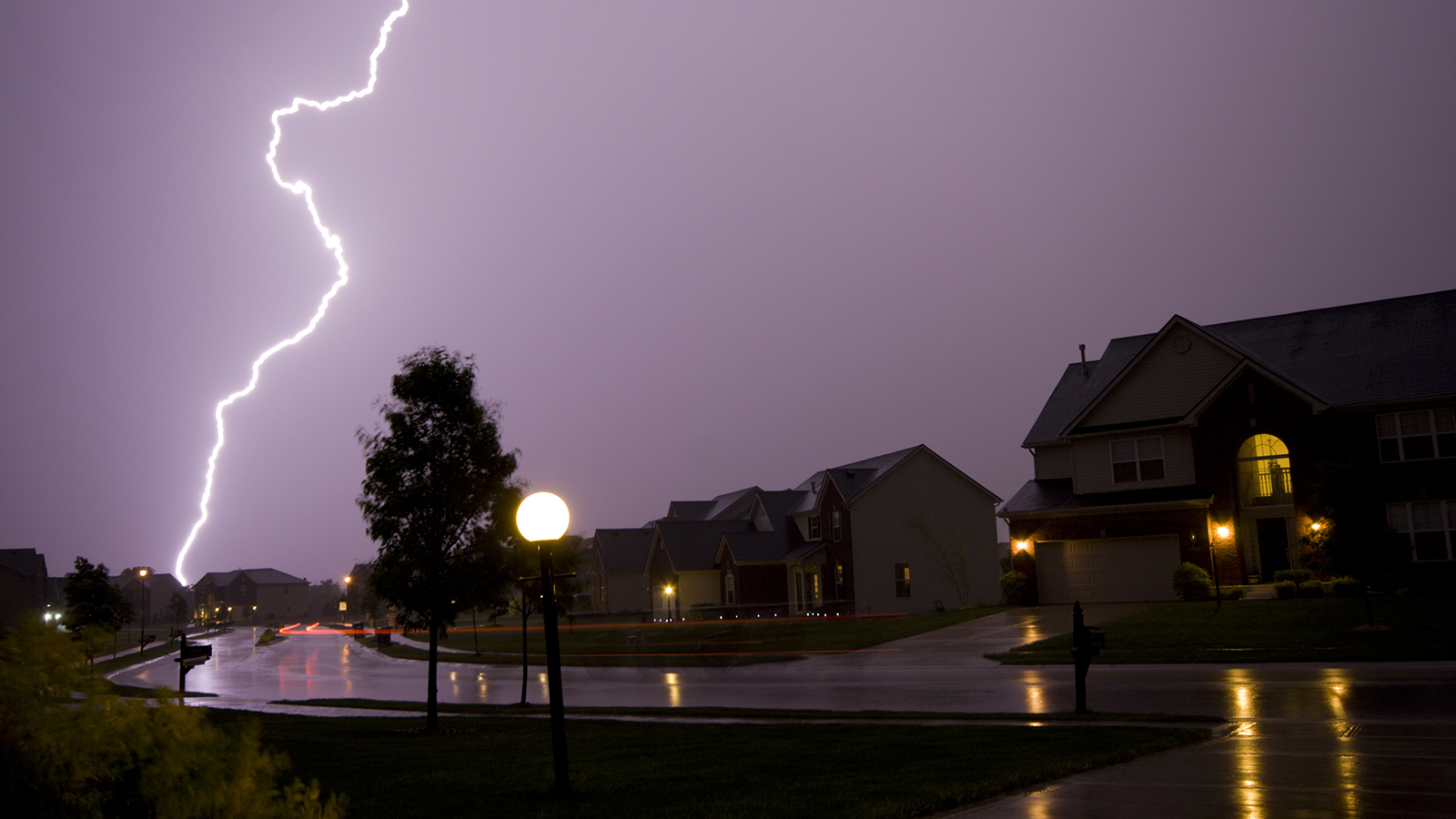Lightning Safety Tips

Lightning is one of the most overlooked weather hazards, but it can cause serious damage. Understanding the danger of lightning and taking the right safety precautions can help protect you and your property when a storm is near.
What exactly is lightning?
To put it as plainly as possible, lightning is what you see when there’s a sudden discharge of electricity from a cloud. The insanely high heat produced by a lightning bolt can be up to five times hotter than the surface of the sun and causes the air to expand rapidly, which makes a loud booming sound that we call thunder.
Did you know there are different types of lightning?
There are three main types of lightning.
1. Cloud to ground: This is the most dangerous type of lightning that reaches the ground. Ground strikes can cause damage to buildings or structures and can even dig a trench into the ground.
2. Cloud to cloud: This type of lightning does not strike the ground, but instead travels between clouds.
3. Cloud to air: This type of lightning does not reach the ground but can still produce loud thunder.
Lightning fact: Thunder and lightning happen roughly at the same time, but since light travels faster than sound, you’ll see the lighting flash before you hear the thunder.
Protect yourself against lightning
If you’re near shelter, go inside and wait it out. If you can’t get to shelter quickly or you’re in an open area, here’s what you can do to stay safe:
- Avoid elevated areas and bodies of water.
- Don’t lie flat on the ground.
- Never shelter under an isolated tree.
- Stay away from objects that conduct electricity (metal hand railings, metal bleachers, fences, bicycles, etc.).
- If you don’t have a safe place to shelter, wait inside your car. The metal frame of a vehicle directs the lightning’s electricity around the outside of the car and into the ground. Keep your windows closed and avoid touching metal parts of the vehicle like door handles, gear shifts, or the radio. Do not shelter in convertibles, motorcycles, or vehicles with plastic or fiberglass roofs.
Protect your home against lightning
- Install a lightning protection system: This can redirect lightning into the ground instead of your home. This can include lightning rods, grounding systems, and surge protectors.
- Use surge protectors: Plug your electronics into surge protectors to help prevent damage from sudden voltage spikes.
- Unplug electronics during storms: If you know a storm is heading your way, unplug TVs, computers, and other devices.
- Avoid using water or appliances: Don’t use your sink, shower, or wired appliances during a storm, as lightning can travel through your home’s plumbing and wiring.
- Trim trees around your home: Keep trees and large branches well-trimmed to reduce to risk of damage to your home if lightning strikes.
- Check your insurance policy: Even with the most precaution, lightning strikes can still happen. Review your homeowners or renters policy to make sure it covers lightning-related damage.
Lightning fact: An average lightning bolt can release enough energy to power a 100-watt light bulb for about 3 months.
While taking steps to stay safe during a lightning storm is essential, it’s also important to make sure your home is protected with the right insurance.
Contact your local Alfa® agent today to discuss your home insurance needs.
All coverages are subject to deductibles and policy limits. This is not an insurance policy. It is intended only to provide a general description of Alfa Insurance® and/or its product lines and services. An actual policy contains the specific details of the deductibles, coverages, conditions and exclusions. Your Alfa® agent can explain the policy and benefits and answer any questions you may have before you buy.